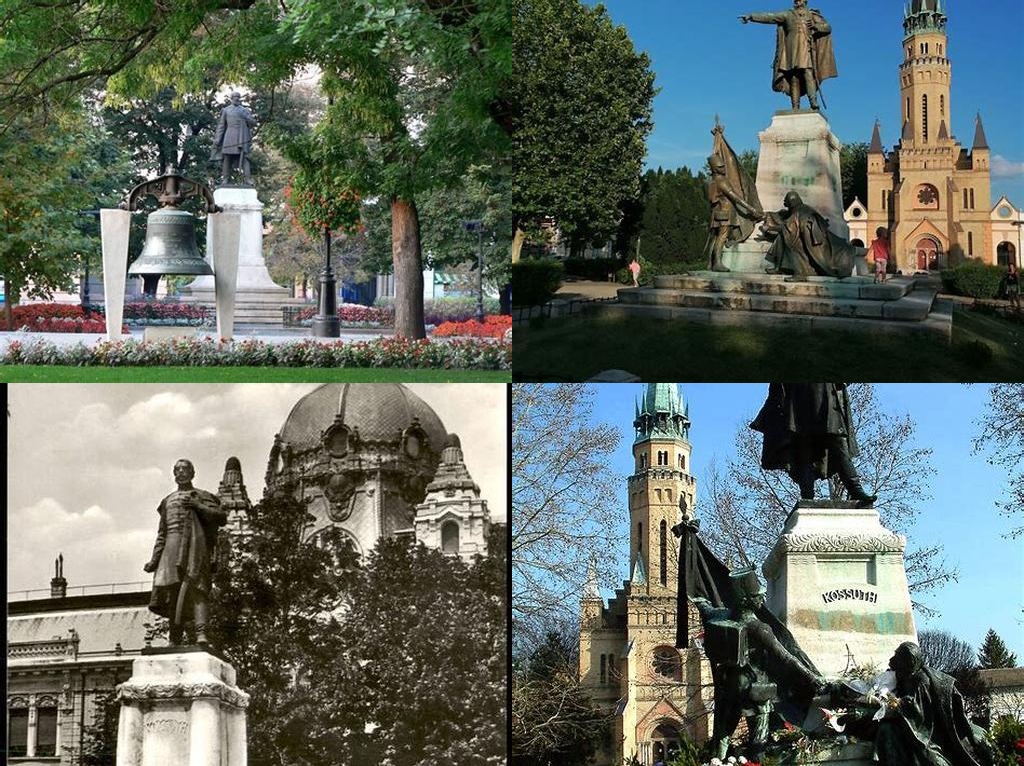
Kossuth tér, the heart and soul of Budapest, is not just a bustling square – it’s a living piece of Hungarian history. Nestled on the banks of the glimmering Danube, this legendary space is more than just a crowd-pleasing photo stop; it’s where the nation’s story comes to life right before your eyes. If you ever imagined the bridge between the past and the present being a physical place, well, here it is. You’re not just stepping onto a square – you’re strolling onto hallowed ground where the course of Hungarian democracy has been shaped, especially since Parliament itself, with its spires and neogothic drama, presides gloriously over the area. As the clouds drift across the Parliament’s facade, blending gothic, renaissance, and baroque influences, the spirit of Lajos Kossuth – the “Father of Hungarian Democracy” – seems to watch over you, reminding all who visit why this square and his statue command such awe.
So, who was this Lajos Kossuth whose statue gives its name and significance to the square? If you haven’t yet come across this name in your history classes, get ready for a crash course in heroism and courage! Born in 1802, Kossuth was a passionate statesman, fiery journalist, and one of the pivotal leaders during the Hungarian Revolution of 1848. A relentless champion of liberty and a charismatic orator, he led the Hungarian quest for autonomy from Habsburg rule. He became so revered that his very image continues to symbolize freedom and determination in the Hungarian psyche. This immense stature is immortalized in the Kossuth Statue – a powerful, dramatic monument that is much more than bronze and stone: it is a tribute to resilience and hope.
Take a wander: the square itself is a grand piazza defined by wide, clean spaces perfect for contemplative strolls, spontaneous photo sessions, or simply gazing in awe at the sheer beauty of urban planning. At its center stands the Kossuth Statue, first erected in 1927 and later replaced in 2015 to closely echo its original design. The monument is actually a sculptural ensemble, with Kossuth heroically posed alongside key figures from his government. Watching the sun set behind these striking figures as the Parliament’s lights flicker on is truly an unforgettable Budapest moment.
But Kossuth tér isn’t only a site for reverence; it’s also where modern Budapest comes alive. Politicians, locals, tourists, and schoolchildren all mingle here daily. Bide your time on one of the elegantly simple benches and observe: you might hear passionate debates about today’s political climate, or the faint strains of street musicians lending even more magic to the scene. And don’t rush – the square is surrounded by architectural marvels beyond the Parliament itself. The Ministry of Agriculture is another neoclassical wonder worth admiring, and the National Assembly Guard’s daily changing of the guard is a free show rivaling anything you’d find in bigger capitals.
History buffs will find much to love in the subtle details. There’s a poignant memorial marking Hungary’s tragic role in the 1956 Revolution, and in the paving stones you’ll spot markers denoting stages in parliamentary history. For a full sensory immersion, visit in spring when the square’s lawns burst into color, or attend a night tour when the Parliament’s illuminated towers seem to float above the Danube like a fairy-tale castle.
It’s also a perfect home base for exploring the city. After soaking up the ambience on Kossuth tér, you’re an easy walk (or metro ride on the historic Line M2) from the Chain Bridge, Buda Castle, and the lively cafés of Pest. If you crave the authentic flavor of Hungary, pop into a traditional bistro nearby for goulash, or grab a fresh pastry from a local bakery – the aroma alone is a promise that you’ll be coming back for more.
Ultimately, what makes Kossuth tér and the Kossuth Statue irresistible is the seamless blend of gravitas and energy. Whether you come for the inspiring history, the stunning architecture, or simply to people-watch and bask in the Budapest sun, you’ll find yourself drawn into a uniquely Hungarian story. It’s no exaggeration to say: if you want to truly understand the heart of Hungary, you have to spend time here. So go ahead – stand beneath the watchful gaze of Lajos Kossuth, listen to the square’s stories, and let the spirit of freedom and resilience fill you with wanderlust.





